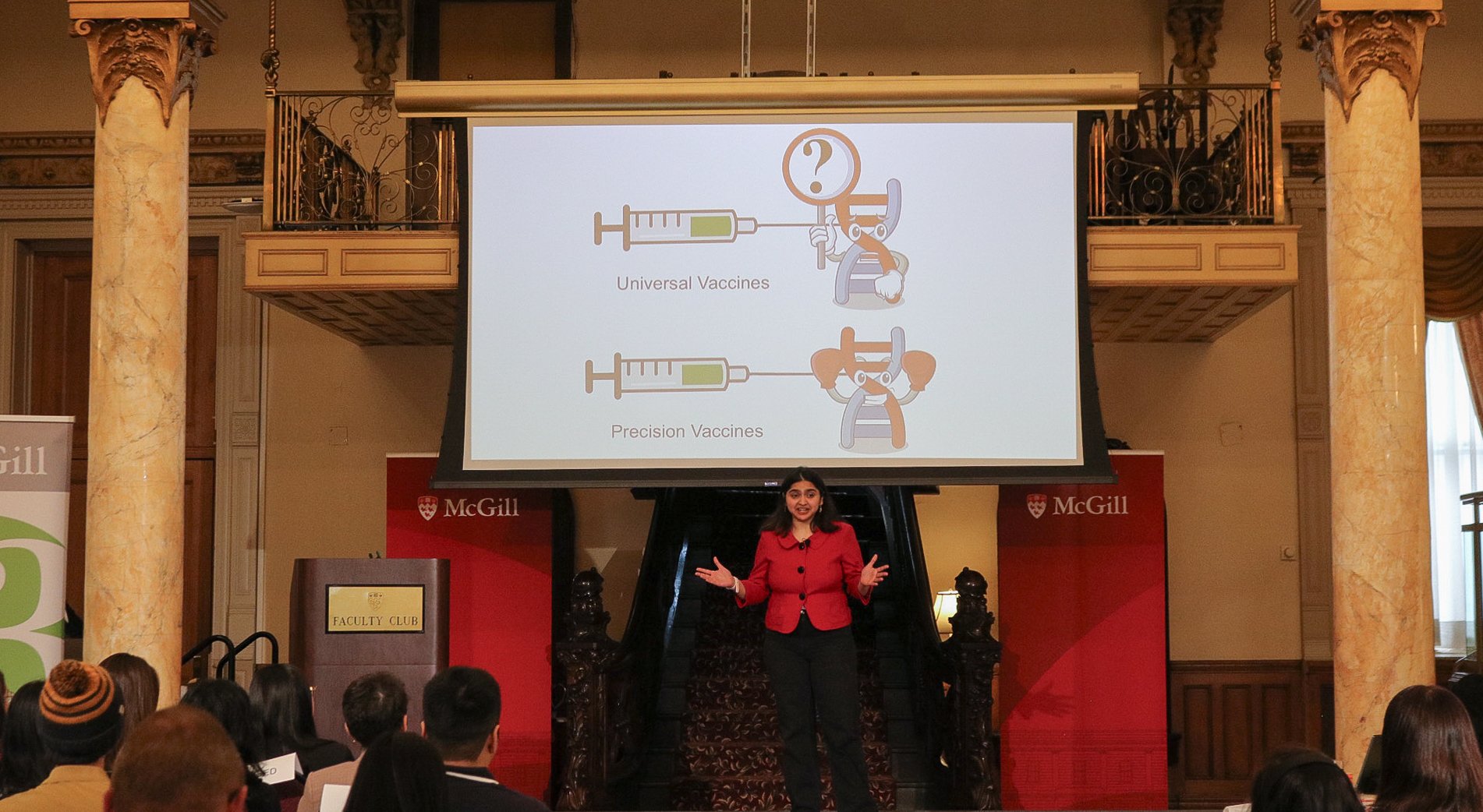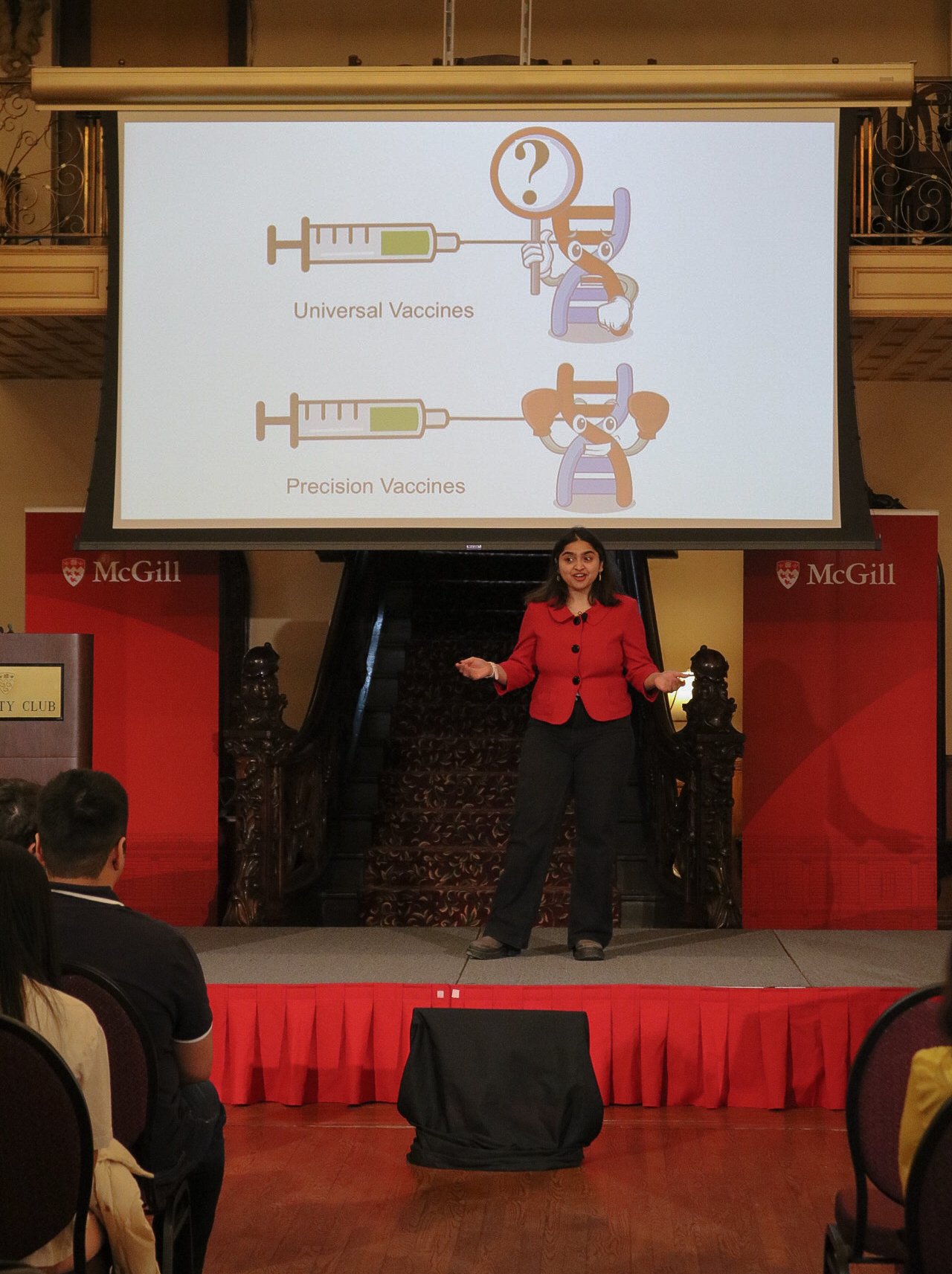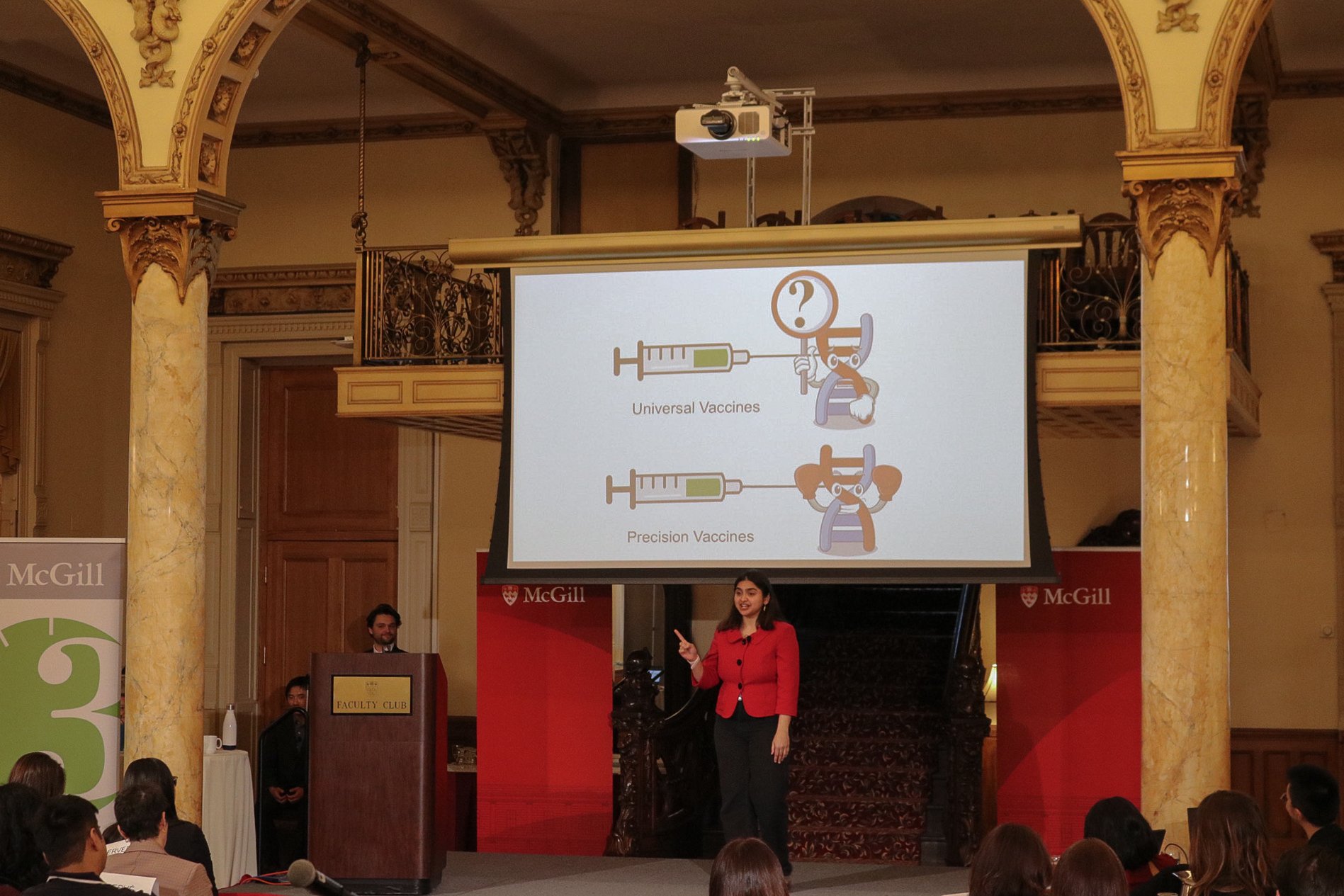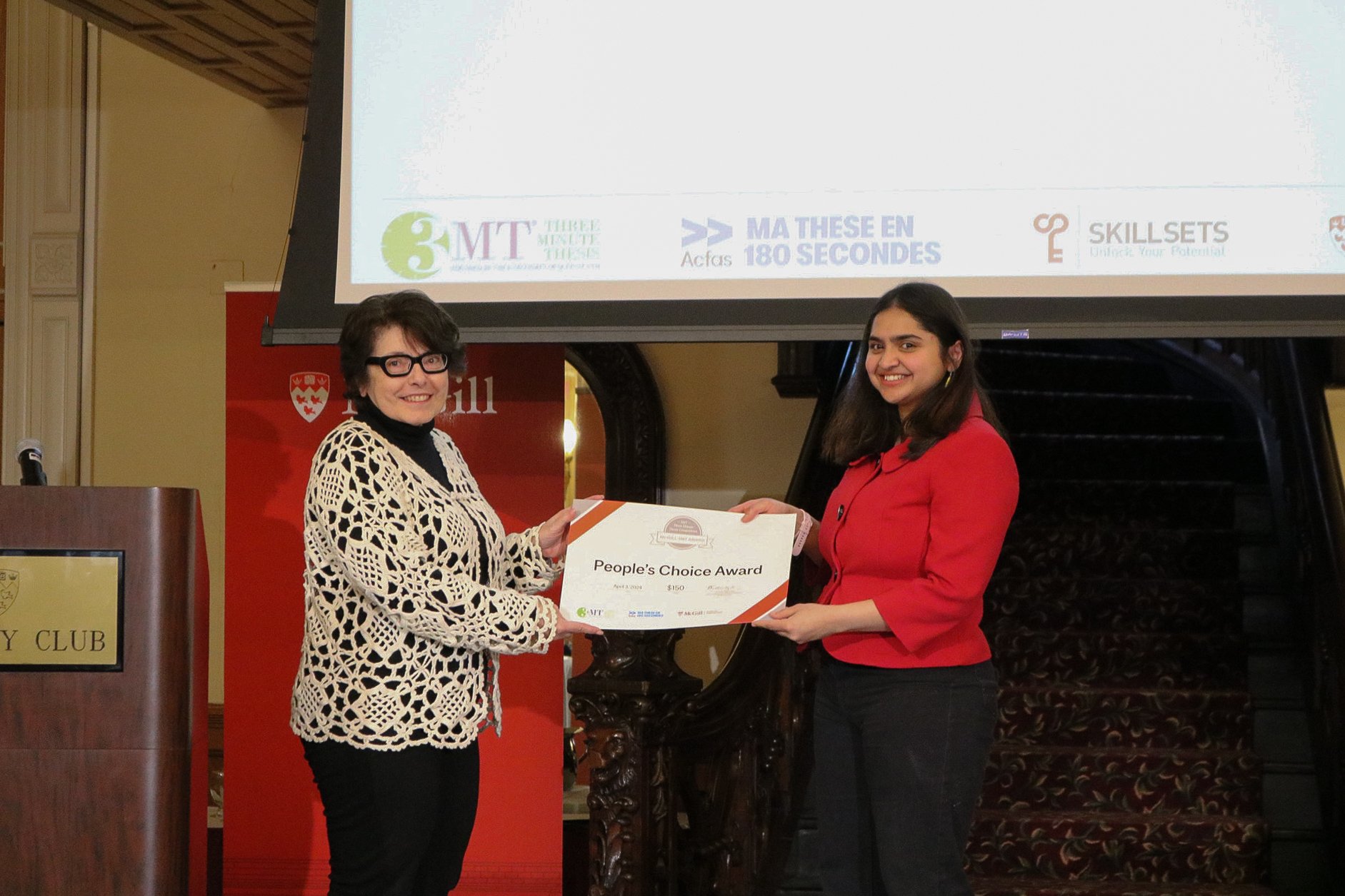The CERC team wants to congrats Peyton McClelland for winning the 3-min presentation of the Human Genetics Research Day, organized by the Department of Human Genetics of McGill on May 30, 2024.
Over 150 students and faculty participated to this event, showing the dynamism of Genetics at McGill. Dr. Stephen Scherer for joined the participants as the keynote speaker under the Scriver Family Visiting Professorship in Genetic Medicine, with his talk entitled: “Every biological study will be enlightened by an accompanying genome sequence”.
Peyton presented a 3-min talk titled Investigating HLA in a Quebec population-based biobank about her work in the CERC team on analyzing and imputing HLA in the CARTaGENE biobank to enable cataloguing HLA variation and disease association in the Quebec population.
You will find the whole abstract of the presentation below:
Calling HLA allele variation in the Quebec population-based CARTaGENE cohort using whole-genome sequencing data.
Peyton McClelland, Ken Sin Lo, Guillaume Lettre, Claude Bhérer, Daniel Taliun
The human leukocyte antigen (HLA) system contains genes involved in many immunological processes, and HLA variation is associated with many disease-related phenotypes, including type I diabetes, multiple sclerosis, and rheumatoid arthritis. HLA allele frequencies differ significantly across populations, making population-specific HLA characterisation necessary to understand the HLA variation within a given population. We built a catalogue of high-resolution HLA alleles in the province of Quebec, using high-depth whole-genome sequencing (WGS) data from 2,180 participants from CARTaGENE, a population-based cohort with recruitment centers in six regions of Quebec that has collected high-quality biosamples and extensive health information. We performed HLA typing of class I and II classical alleles using the HLA*LA method. After quality checks, 44,634 alleles were retrieved from 2,088 participants. 307 individual HLA alleles were observed at least once in the CARTaGENE WGS dataset. Of these, 262 HLA alleles were also present in the most extensive publicly available multi-ancestry high-resolution HLA reference panel, HLA-TAPAS (n=21,546). 49 of 262 HLA alleles were at significantly different frequencies in the CARTaGENE cohort (p < 2.15 x 10-4). Frequencies of 51 low-resolution (one-field) HLA allele types were also previously reported in the Hema-Quebec donor biobank in 17 administrative regions of Quebec. We compared regional allele frequencies in CARTaGENE to the Hema-Quebec cohort. In the CARTaGENE WGS dataset, frequencies of 38 shared HLA alleles correlated well with province-wide frequencies in Hema-Quebec (Pearson’s r = 0.9841); 2 alleles were at significantly different frequencies in CARTaGENE (p < 1.32x 10-3). For individual CARTaGENE sampling regions, HLA allele frequencies were well correlated with corresponding Hema-Quebec regions, with Pearson’s r ranging from 0.88-0.93. These preliminary findings suggest that sequencing-based HLA calling in the Quebec population may yield population-specific differences in HLA variation and disease associations, for which specialized methods for population-specific imputation and analysis will be developed.
















